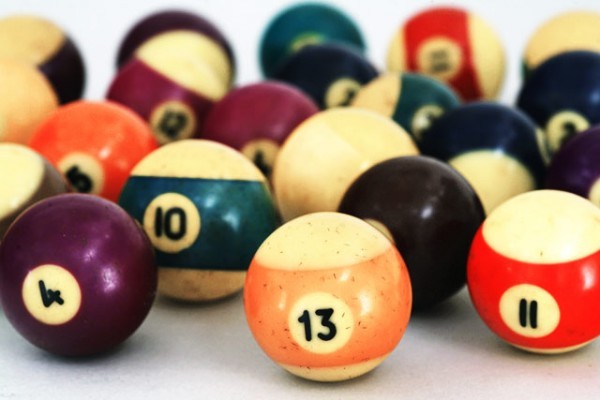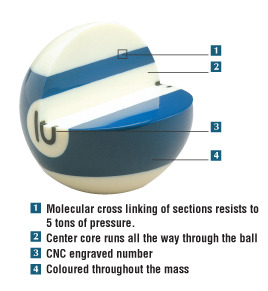
Where Billiards Players Meet the Proper Instruments
What are billiard balls made of?
By David Muñoz
Always willing to hold our blows, dancing on the table, bouncing in the bands and end up in the pockets. So goes the life of a billiard ball, whose fate is always in our hands … and our tacos. These so perfect and resistant areas that never get tired of shooting are the protagonists of today’s article, because every billiard player should know what they are made of billiard balls.

The first billiard balls were ivory. With an elephant tusk could make just three or four balls in a lengthy process, so it ended up being very costly. The high price coupled with the fragility and little homogeneity of the balls made thus forced to look for another more affordable material.
An American inventor, John Hyatt , found in 1860 a great substitute for ivory nitrocellulose. Mixing alcohol with a plastic material to manufacture much cheaper balls was achieved. The problem was that the material was like wildfire and a strong hit could make it explode.
Half a century later, the chemist Leo Baekeland invented Bakelite , the type of phenolic resin with which most of billiard balls today are manufactured (though also used for its great advantages: it is very resistant to heat, it is cheaper and it allows for perfectly spherical, highly impact resistant and less dirty balls.

Brand Belgian Aramith is the reference in the market of billiard balls. Whether Pool, Snooker or Carom, in most tournaments officers used their high quality ball , also made of phenolic resin. If you’ve never seen a billiard ball inside, might surprise you to see that you are completely solid and that in the case of Saluc (Aramith) , colors and numbers are not only superficial but are embedded throughout the ball.
Some treats who treats them better and worse. Some of always cleaned after playing and others have done once since they were purchased. But they, discolored or not, always obey the orders that transmit them our beatings. Always roll, always bounce back and always end up in the pockets, but quickly return to leave them to return to their refuge box or triangle.
Here’s the anatomy of a billiard ball.